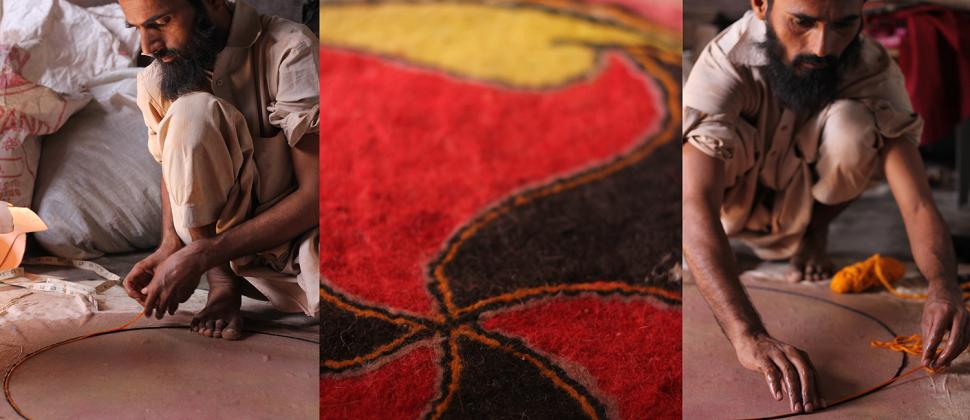A Wool Craft
In the 11th century, during the reign of the Mughal Emperor Akbar, a man named Nubi innovatively created a felted covering for the king's ill horse. Ever since, people have been making felted cloth from the wool of sheep. The craft is primarily practiced by the Pinjara and Mansuri communities, Sama Muslims native to Kachchh. Namda is a craft made for all types of climates. There are Namda artisans throughout India, working in Kashmir, Himachal Pradesh and Rajasthan.
In Kachchh, the Pinjara and Mansuri communities create felted namda from indigenous sheep wool. After the wool is collected, cleaned, dyed, and compressed into sheets, artisans create colorful and intricate designs which are often embroidered. Namda is still used to create saddle blankets for horses and camels in local nomadic communities. Prayer mats for Muslims also can be found felted from the course, earthy fabric
The Future of Felt
Only four Namda practitioners remain in Kachchh today. The namda artisans Khamir supports are based in Gagodar and Mundra. The market for namda craft is located primarily in Saurashtra where Darbars, Patels, and Marvadis buy products regularly for their horses. Namda craft serves as a sole source of income for artisans, who feel that the craft is sustainable.

Khamir works with artisans to establish new linkages that further the craft. By introducing new designs and products, Khamir is helping to ensure this craft has a future.